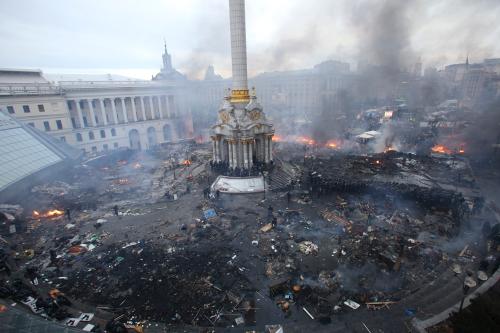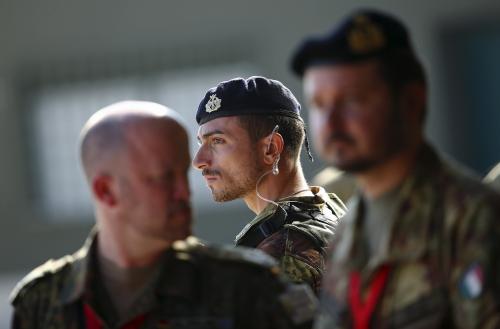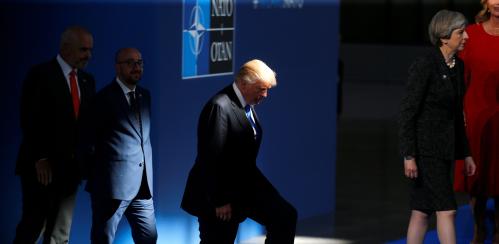I would prefer that President Trump fully support NATO’s Article 5, to ensure the alliance’s deterrent is clear and therefore robust. My colleague Tom Wright is absolutely correct about this. Moreover, my colleagues Richard Bush, Bruce Jones, and Robert Kagan, among others are convincing in their support for America’s system of global alliances. I myself wrote public critiques of candidate Trump’s apparent disdain for American alliances in the course of the 2016 election campaign.
All that said, I am not as up in arms as some about President Trump’s refusal to explicitly endorse Article 5 in his speech on May 25 in Brussels. That choice was regrettable—but it was also a relatively minor mistake, in my eyes, and not without some understandable basis.
For one thing, if you read Article 5, it actually entails a bit more ambiguity than some tend to remember. Here it is, in its entirety, from the 1949 Washington Treaty that created the cornerstone of NATO:
“The Parties agree that an armed attack against one or more of them in Europe or North America shall be considered an attack against them all and consequently they agree that, if such an armed attack occurs, each of them, in exercise of the right of individual or collective self-defense recognized by Article 51 of the Charter of the United Nations, will assist the Party or Parties so attacked by taking forthwith, individually and in concert with the other Parties, such action as it deems necessary, including the use of armed force, to restore and maintain the security of the North Atlantic area.
Any such armed attack and all measures taken as a result thereof shall immediately be reported to the Security Council. Such measures shall be terminated when the Security Council has taken the measures necessary to restore and maintain international peace and security.”
Note the phrasing “…such action as it deems necessary, including the use of armed force…” The second part of that phrase makes it sound as if a military response should be axiomatic and immediate. But the first part guards the sovereign right of each country to make its own decision, based on the specifics of a given situation.
The ambiguity is inevitable, because no one can foresee all contingencies, and the way NATO should respond to one threat is necessarily different from how it should respond to another. Even if Trump had fully endorsed it, it would not automatically commit the United States to any particular course of action in the event of, say, another Russian cyberattack on Estonia, or a use of Russian “little green men” to seize some remote border town in eastern Latvia. The words of Article 5 are no silver bullet.
The words of Article 5 are no silver bullet.
Also, in this business, actions speak louder than words—and we still have thousands of U.S. troops undergirding our commitment to Poland and the Baltic states, among other forward regions. Trump hasn’t suggested pulling these forces back.
Also, there is other reassurance—Trump’s statement that NATO is no longer obsolete, his administration’s maintenance of sanctions on Russia over Ukraine, assurances from the rest of his top national security team underscoring our resoluteness to defend NATO—that things aren’t nearly as bad as I feared they might be when listening to then-candidate Trump. The Trump administration has reaffirmed American obligations and sustained American foreign policy in Europe in most ways.
So, while I would have preferred that he fully support Article 5—and voice that—I don’t expect to lose sleep over it. And if a few European friends do lose a little sleep over it (and thereby consider stepping up their burden-sharing a bit), the outcome won’t be all bad.
The Brookings Institution is committed to quality, independence, and impact.
We are supported by a diverse array of funders. In line with our values and policies, each Brookings publication represents the sole views of its author(s).








Commentary
On Trump’s Article 5 omission
May 25, 2017